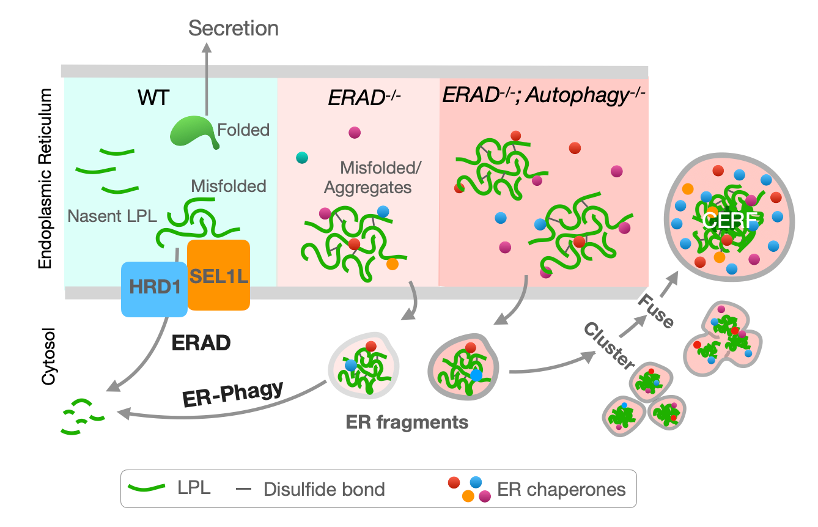Abstract
Endoplasmic reticulum (ER)-associated degradation (ERAD) and ER-phagy are two principal degradative mechanisms for ER proteins and aggregates, respectively; however, the crosstalk between these two pathways under physiological settings remains unexplored. Using adipocytes as a model system, here we report that SEL1L-HRD1 protein complex of ERAD degrades misfolded ER proteins and limits ER-phagy and that, only when SEL1L-HRD1 ERAD is impaired, the ER becomes fragmented and cleared by ER-phagy. When both are compromised, ER fragments containing misfolded proteins spatially coalesce into a distinct architecture termed Coalescence of ER Fragments (CERFs), consisted of lipoprotein lipase (LPL, a key lipolytic enzyme and an endogenous SEL1L-HRD1 substrate) and certain ER chaperones. CERFs enlarge and become increasingly insoluble with age. Finally, we reconstitute the CERFs through LPL and BiP phase separation in vitro, a process influenced by both redox environment and C-terminal tryptophan loop of LPL. Hence, our findings demonstrate a sequence of events centered around SEL1L-HRD1 ERAD to dispose of misfolded proteins in the ER of adipocytes, highlighting the profound cellular adaptability to misfolded proteins in the ER in vivo.

|
Paper Link: https://www.nature.com/articles/s41467-023-38690-4
|
